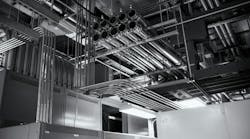A maintenance supervisor acted on a hunch and ran a custom report from the computerized maintenance management system (CMMS). From this, he could see that on the east side of the plant, motor failure rates were eight times higher than on the west side. They have roughly the same number of motors and are supplied from the same service. The crews performing the motor replacements were not side-specific, so problems with installation, alignment, and connection were not side-specific.
He then looked at the preventive maintenance (PM) work orders. These called for vibration measurements and taking voltage measurements at the controller, plus a visual inspection with a checklist. This work couldn’t possibly account for the disparity, even though east side and west side crews were assigned. Where should he look next?
Motor lubrication is a critical part of preventive maintenance for motors, but it wasn’t in the PM work orders. That means if it’s being done at all, it’s assigned to specific people who handle lubrication on a separate schedule from other PM work. The PM crews are side-specific, so the lubrication people probably are also.
At this plant, do people believe lubrication is low-level grunt work? Big clue, if true. Lubrication, a specialty in which many things can go wrong, requires a properly trained person to get all of those things right. The disparity in failure rates can probably be explained by a disparity in lubrication training.




